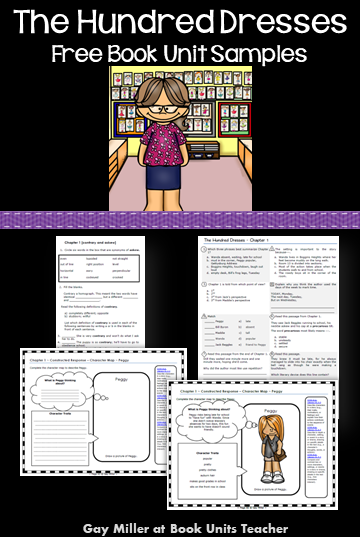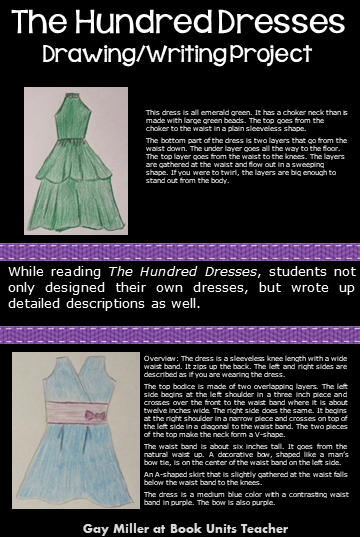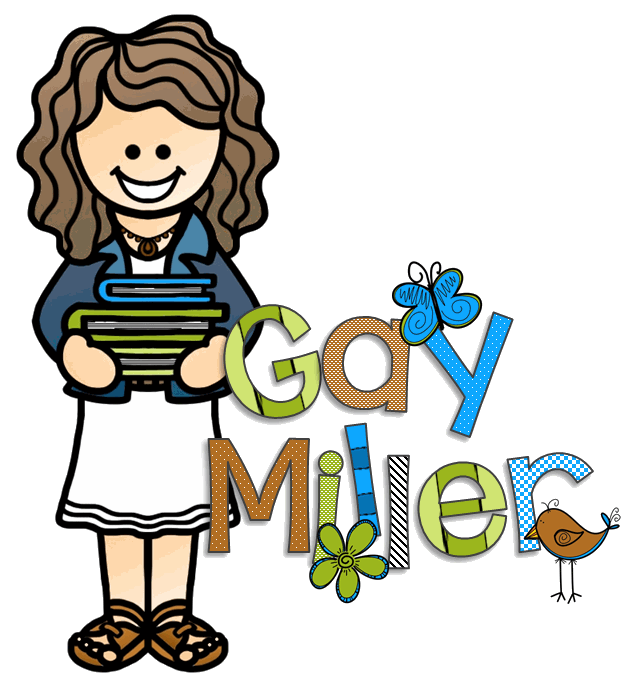
Have you ever felt like an outsider or experienced bullying? If so, then The Hundred Dresses by Eleanor Estes is a book you won’t want to miss.
Published in 1944, this beloved children’s book tells the story of Wanda Petronski, a young Polish immigrant. She is teased by her classmates for wearing the same faded blue dress to school every day. Wanda tells her classmates that she has a hundred beautiful dresses at home, but her classmates don’t believe her. When Wanda suddenly moves away, her classmates learn a valuable lesson.
With its timeless themes of friendship, acceptance, and compassion, The Hundred Dresses is a powerful and moving story. So pick up this classic book and join Wanda and her classmates on a journey of self-discovery and understanding.
Teaching Ideas for The Hundred Dresses
Book Unit Samples

This sample includes:
- Vocabulary Practice for Chapter 1
- Comprehension Questions for Chapter 1
- Constructed Response Question – Character Map
Teaching Idea #1 – Audio Book
Teaching Idea #2 – Setting

The book was published in 1944 during World War II. This was a time when many immigrants were facing discrimination. Use the book to discuss the historical context of the story and how it relates to today’s world. Encourage students to research different immigrant groups and their experiences in the United States.
Teaching Idea #3 – Anti-Bullying Activities

Use the book to launch an anti-bullying campaign in your classroom or school. Have students create posters, skits, or videos that promote kindness, acceptance, and empathy.
Student Project – Designing a Dress
A number of years ago, I had my students complete a drawing/writing project with monsters. Students drew a monster and colored it. They had to keep their drawings secret. No one was to see them until the “reveal.”
Students then had to write detailed instructions for another person to follow to draw the exact same monster. Next, students exchanged instructions and drew a second monster based on the instructions alone. Then, students revealed their original monster drawings. Students compared the two drawings to determine if the instructions gave a clear “picture” of the monster.
The project was a lot of fun. It was a real eye-opener for many students whose instructions were not clear.
What does this have to do with The Hundred Dresses?

As I was creating The Hundred Dresses Book Unit, I thought this type of drawing/writing project would be a great activity to do with this unit, only with dresses instead of monsters. I asked the students (girls only) to keep their dress patterns very simple to make the instructions easier to write. Here are a couple of the results:
Dress #1

Overview: The dress is a sleeveless knee-length with a wide waistband. It zips up the back. The left and right sides are described as if you are wearing the dress.
The top bodice is made of two overlapping layers. The left side begins at the left shoulder in a three-inch piece and crosses over the front to the waistband where it is about twelve inches wide. The right side does the same. It begins at the right shoulder in a narrow piece and crosses on top of the left side in a diagonal to the waistband. The two pieces of the top make the neck form a V-shape.
The waistband is about six inches tall. It goes from the natural waist up. A decorative bow, shaped like a man’s bow tie, is on the center of the waistband on the left side.
An A-shaped skirt that is slightly gathered at the waist falls below the waistband to the knees.
The dress is a medium blue color with a contrasting waistband in purple. The bow is also purple.
Dress #2

This dress is all emerald green. The choker neck is made with large green beads. The top goes from the choker to the waist in a plain sleeveless shape.
The bottom part of the dress is two layers that go from the waist down. The underlayer goes all the way to the floor. The top layer goes from the waist to the knees. The layers are gathered at the waist and flow out in a sweeping shape. If you were to twirl, the layers are big enough to stand out from the body.
See the product that inspired this post.

The Hundred Dresses Book Unit contains graphic organizers for an interactive notebook and game activities. Vocabulary, comprehension, constructed response writing, and skill practice are all included.


